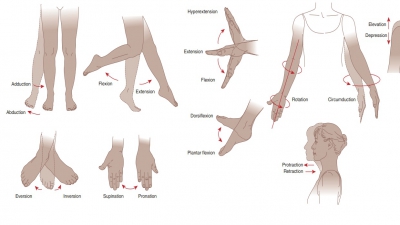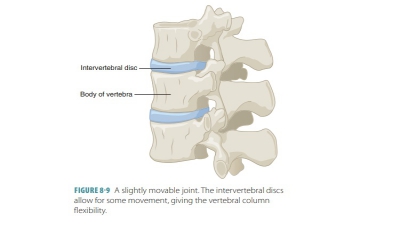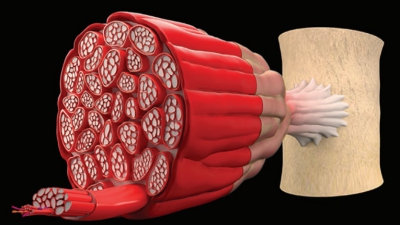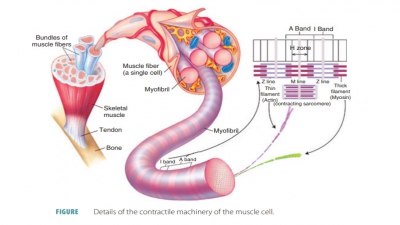Summary
| Home | | Anatomy and Physiology | | Anatomy and Physiology Health Education (APHE) |Chapter: Anatomy and Physiology for Health Professionals: Support and Movement: Articulations
Joints can be classified according to their degree of movement and by the type of tissue that binds together the bones that surround them.
Summary
Joints can be classified
according to their degree of movement and by the type of tissue that binds
together the bones that surround them. Joints are divided into fibrous,
cartilaginous, and synovial types. Fibrous joints are tightly joined by a layer
of dense connective tissue. They include sutures, syndesmoses, and gomphoses.
Fibrous joints may be amphiarthrotic (having little movement, such as
cartilaginous joints) or synarthrotic (immov-able). Cartilaginous joints
include synchondroses and symphyses. Synovial joints are covered with hyaline
cartilage and are held together by a fibrous joint capsule. Synovial joints
that allow free move ment (diarthrotic) include ball -and-socket, hinge,
condyloid, gliding, saddle, and pivot types. Syno-vial joints include
characteristics such as articular cartilage, articular cavities, articular
capsules, synovial fluid, reinforcing ligaments, nerves, and blood vessels.
Examples of synovial joints include the shoulder, elbow, hip, knee, and TMJs.
Both bursae and tendon sheaths are closely related to synovial joints.
Joint movements include flexion,
extension, dorsiflexion, plantar
flexion, hyperextension, supination, eversion, inversion, rotation, circumduction, pronation,
supination, abduction, adduction, retraction, protraction, depression, and elevation. Joints must be
stabilized to avoid becoming dislocated during stretching and compression.
Muscle tendons crossing joints are often the most important factors concerning
stability. As we age, joints may develop conditions such as arthritis or
rheumatism. Many people over age 60 have osteoarthritis, which is also known as
degenerative joint disease. Rheumatoid arthritis is an autoimmune disease
that affects the joints. Gouty arthritis involves uric acid crystals forming
in the synovial joint fluid.
Related Topics




